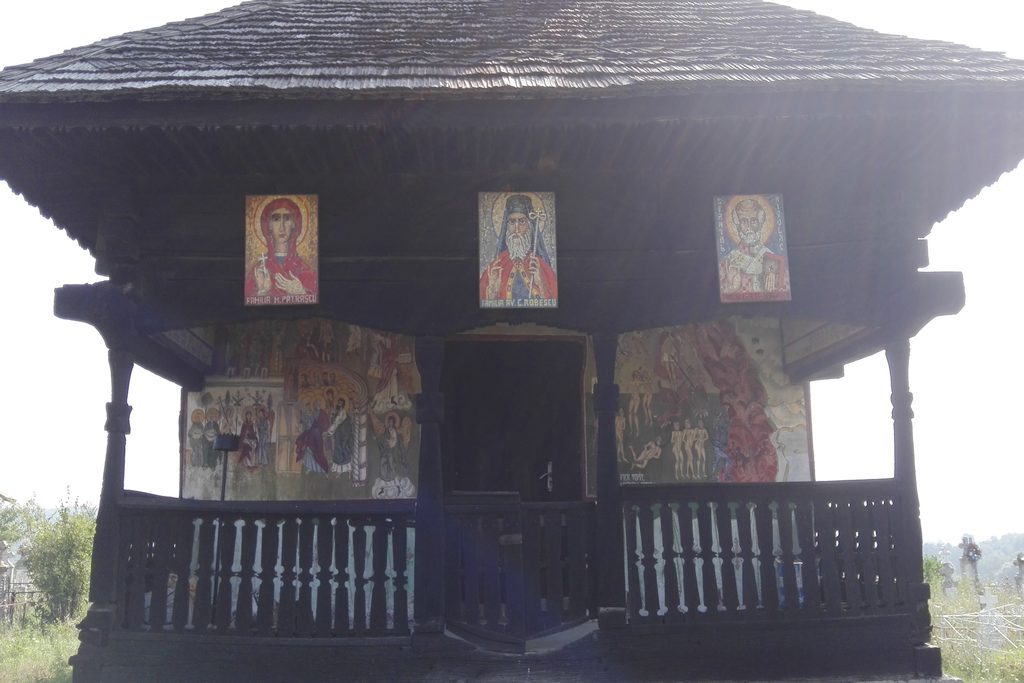

It is believed that the church was initially built in the locality Văgiulești, from the county Gorj, in the year 1785, on the expenses of the steward Constantin Strâmbeanu. There is also another version, the one of bringing it from Maramureș, less probable, inspired probably by the atypical architecture for de wooden churches from Oltenia: high tower, with closed gallery, flanked by four small towers, pointed rise of arch.
In the year 1889, at the initiative of the princess Zoe Brâncoveanu, was repaired and re-painted. In the year 1910 it was moved by the prince Anton Bibescu on his property from Corcova. In 1948, after the nationalization of the mansion and of the property of the prince, the church was used as storage for the I.A.S. from the locality, and then as stable for the cows. The church was saved from ruin by the lawyer Constantin V. Robescu, the jurist of I.A.S. from Corcova, who, in 1969, in full communist regime, received the approval of the Department of Cults in order to use the recoverable wooden material and of re-building the church in its village, Fântâna Domnească. The reconstruction works, finished in 1977, were executed by the wooden mastern from the area: Gheorghe Rădoi from Fântâna Domnească, Iosif Dăescu and Ion Ciucă from the neighbor village Mijarca. The shingle roof was executed by a master from the Apuseni Mountains.
Currently, because of the fact that in the locality Fântână Domnească there is another place of worship, the church is used as a funeral chapel in the cemetery from the eastern margin of the locality. The church was re-consecrated on the date of the 19th of October 2008 by the Bishop of Severin and Strehaia.
Anton Bibescu was a Romanian prince, born in an old family of aristocrats. He was a lawyer, diplomat and writer. Before the First World War, the prince Anton was firstly attached, then commissioned with the business for the legation of Romania at London and in 1918 he had entered in the circle of the former liberal prime-minister Henry Asquith.
Antoine continued his diplomatic career at Washington (1920 – 1926) and Madrid (1927 – 1931). The years of the Second World War were spent by him in Romania where his wife died in 1945, and when his properties were confiscated by the communists he left the country, without coming back ever. In her autobiography, Enid Bagnold talks about the way he had passed over the Channel Tunnel with the silvery of Bibescu. Anton Bibescu died on the date of the 2nd of September 1951.
